- 0 Comments
- 18 min Read
About Ganesh Chaturthi | Vinayaka Chaturthi Meaning
Book Now Ganesh Chaturthi Puja
Puja would be Live Streamed
on Saturday, 7 September, 2024 and seek the blessings of the Lord Ganesha for Health, Wealth, Wisdom, Prosperity and Success. Lord Ganesha is the God of auspicious beginnings; He is Vighnaharta, meaning the remover of all obstacles in the path of success.
Lord Ganesh is one of the prime deities in Hinduism. He is one of the most loved and revered deity across the nation and abroad. Just the way Lord Ganesh is addressed with 108 names. Similarly, His birth anniversary too is addressed by many names like the ‘Ganesh Chaturthi’, ‘Vinayak Chavithi’, ‘Vinayagar Chathurthi’, ‘Ganeshotsav’ and ‘Ganesh Jayanti’.
Few of the most popular names Lord Ganesh is addressed with are ‘Ganapati’, ‘Gajanana’ ‘Vinayak’, ‘Lambodar’, ‘Sukhakarta’, ‘Dukhaharta’, etc. With an elephant head and a huge belly, Lord Ganesh is known to protect His devotees from all the Vighna (hurdles/obstacles) that come in their life.
He is the highly revered and adored deity who is worshipped in almost every Hindu household. His birth anniversary is celebrated all over the nation and abroad, but the Indian state of Maharashtra is famous worldwide for celebrating Ganesh Chaturthi with great fervor, enthusiasm and total dedication.
it will be commemorated on Saturday, 7 September, 2024. This 10-day (on average) event will conclude on Tuesday, September 17, 2024 with Ganesh Visarjan and Anant Chaturdashi celebration; however, the ending date may vary depending on location and state.
Worshipping Lord Ganesh duly aids in the resolution of all issues, bringing happiness and prosperity into one's life. In Hinduism, Lord Ganesh is worshiped before the commencement of any endeavor, work, or religious puja to ensure that everything goes well and produces the desired results.
Ganesh Chaturthi is a massive celebration like no other that unites millions of people fully absorbed in bhakti at homes, in the streets and all over the cities and towns, with huge parades carrying Ganesha idols.
Ganesh Chaturthi Muhurat | Ganesh Chaturthi Dates & Tithi
Ganesha Chaturthi on Saturday, September 7, 2024
Madhyahna Ganesha Puja Muhurat - 11:07 AM to 01:33 PM
Duration - 02 Hours 27 Mins
Ganesha Visarjan on Tuesday, September 17, 2024
On previous day time to avoid Moon sighting - 03:01 PM to 08:34 PM, Sep 06
Duration - 05 Hours 33 Mins
Time to avoid Moon sighting - 09:09 AM to 09:12 PM
Duration - 12 Hours 03 Mins
Chaturthi Tithi Begins - 03:01 PM on Sep 06, 2024
Chaturthi Tithi Ends - 05:37 PM on Sep 07, 2024
Rudra Centre Puja Services Performed Ganesh Chaturthi Maha Puja On 18th August, 2023
Rudra Centre Puja Services conducted Ganesh Chaturthi Maha Puja which started with Aarti and Sankalpa. Prayers were offered to Shiva Parivar, Goddess Laxmi & Lord Ganesha for Wisdom, Prosperity and Good Fortune. This was followed by Abhishek of Laxmi & Ganesh. Lord Ganesha the Vignahartha was prayed for removal of obstacles and delays. Recitation of Ganpati Atharvasheesh Stotra and Ganpati Mantra Japa filled the devotees with spiritual bliss and joy.
Significance of Lord Ganesha
Lord Ganesha is Lord Shiva's and Goddess Parvati's son. Ganesha denotes ‘Lord or Chief of the Ganas' as well as ‘Lord of the People.' Lord Ganesha is commonly known for bringing people together, as evidenced by the enormous celebrations held every year to commemorate His birthday on Ganesh Chaturthi.
His large head represents big thinking. It has to do with wisdom. The vast ears represent the need to listen more. The little eyes represent focus. The rope represents raising oneself to a greater level of achievement. One tusk represents retaining the good and discarding the negative.
Lord Ganesha is depicted in images as bestowing a benediction with his right hand, which represents excellent protection on the spiritual path. The axe weapon denotes the severing of all materialistic worldly affairs. The trunk represents flexibility and efficiency. His chubby stomach means the quiet digestion of good and bad in life.
Lord Ganesha has 108 different names. Ganesha is usually addressed as Ganapati, Gajavaktra (one with an elephant's mouth), Haridra (one with golden skin), Gajanan, Dwimukha, Vighnaharta, Vighnakarta, Vinayaka, Mahaganapati, Heramba, Siddhaye, Vakpati, Shivapriya, Siddhivinayaka, Agraganyaya, Agrapujyaya, Sarva.
His potbelly has earned him the nicknames 'Lambodara' and 'Mahodara.' He has a single complete tusk and the other is fractured, so the moniker 'Ekadanta,' and so on.
Modaks are Lord Ganesha's favorite sweets, and Hindus celebrate Ganesh Chaturthi by cooking Modaks to gift to Him. Lord Kartikeya is his brother. And Kailash is his abode.
He has two wives named Ridhi (Prosperity), and Sidhi (Spiritual Power) and two children called 'Shubh' (Suspiciousness) and 'Laabh' (Profit).
Birth of Lord Ganesha
Parvati formed a boy out of dirt from her body and it started guarding her. Meanwhile, Shiva returned home, and the boy, who had no idea who Shiva was, stopped him. This enraged Shiva, and after a spat between the two, he severed the boy’s head.
When Parvati saw this, she became outraged; Lord Shiva, in response, swore to bring the boy back to life. The devas were instructed to head North and find a child's head whose mother was sleeping with her back towards him. They returned with an elephants head which was installed on the boy and thus Ganesh was born.
The significance of the story is that, the lust of the mind becomes an ego that stands between Shiva and Parvati. The higher self is not seen in its presence. When the ego head is cut off, and the memory dawns (which is signified by putting an elephant head (elephant it is said never forgets) about the true purpose of birth, Shiva is able to unite with Parvati. Thus Ganesha Principal is first invoked before beginning any venture or any act, so that one aligns to the root cause behind it which is self realization.
Ganesha was conceived by Parvati and completed by Shiva. Lord Shiva declares him to be His son and gives him the names Ganesha, the first of the Ganas; and Ganapati, the lord of the Ganas. He rose to be one of India's most adored and revered deities.
Lord Ganesh temples are found in almost all countries around the world. He is probably the most widespread deity all across the cultures.
Lord Ganesha’s Principle
Ganesha is the main god of the elemental root chakra which is known as Muladhara chakra. He is also the ruler of Ketu, which is the southern node of the moon in Western astrology. Therefore, speaking to him first can clear the way for the continued path resulting in success in everything we start in life. He is also known as the 'Lord of the New Beginnings'.
The Muladhara chakra is located at the bottom of the spine. It marks the most basic instinct of the individual - the desire for survival that stems from our fear of scarcity and therefore our fear of death. This leads to lust and distractions and unless people overcome this fear, the journey of Kundalini's rise and realization of Lord Shiva will not even begin. The spiritual journey will begin only when Ganesha is realized.
The elephant head also represents material power and prosperity. Because of their large size, elephants can get a lot of food as animals. And because of its size, it has no natural enemies. This makes the elephant less afraid of all the other creatures in the jungle. And thus, a symbol of power. Its existence indicates that a rich ecosystem, fertile, green, and full of water, can support many human settlements. Which makes the elephant a symbol of prosperity.
He blesses those who worship him by opening their minds to accept hidden truths and creative solutions. For the evil doers, he is the source of obstacles and difficulties. He blocks their way by deceiving them. However, for his devotees, he is the destroyer and remover of all obstacles and impurities in their path. By illuminating their minds with wisdom, he brings them peace, prosperity and happiness.
Ganesha was worshipped with his mother Gauri. She, Parvati, is the earth, and He, her son, is the plant that she grows and sustains life on the earth. In addition to this, Ganesha is sometimes depicted in ancient art paintings related to two mothers, who are also Parvati and Lakshmi or Ganges, which strengthens his connection with secular life. He was always surrounded by abundance and he is usually worshipped with Lakshmi too.
It is significant that Shiva gave his son an elephant head. An elephant is a symbol of memory that is never forgotten. He constantly reminds us who we truly are, where we have come from and where we have to go. By meditating on Ganesha, we connect to root purpose of our human birth.
Ganesha has the head of an animal that is neither scarce nor a predator, becoming a symbol and principle of contentment and wisdom. His chubby body not only evokes strength and abundance, but also a sense of satisfaction.
Ganesh Chaturthi Festival Celebration 2024
The murti is either carried home few days before or on the day of Ganesh Chaturthi. Before installing the idol, families adorn a small, clean area of the house with flowers and other colorful objects. The Murti and its shrine are adorned with flowers and other materials when it is installed. On the festival day, the ceremonial installation of the clay murti (idol) is performed along with chanting of holy mantras and pooja comprising bhajans at an auspicious time of day. Domestic festivities finish after 1+ 1 or 2 days, 3, 5, 7 days, or 11 days, depending on the tradition of each region.
The custom of Ganesh Visarjan takes place on the last day of the festival. The final day of the 10-day celebration is also known as Anant Chaturdashi. The idol is submerged in a river, sea, or other body of water for 'visarjan,' or immersion. On the last day, worshippers assemble processions bringing the idols of their favorite God and immerse them.
There is an interesting story behind the lore of Ganesh Visarjan (Nimajjinam). On the last day of the celebration, Lord Ganesha is said to return to Mount Kailash to join his parents, Lord Shiva and Goddess Parvati. The festival of Ganesh Chaturthi also commemorates the importance of the life-cycle of birth, life, and death. Lord Ganesha, also known as the Lord of New Beginnings, is also revered as the remover of obstacles.
When the Ganesha statue is carried out for immersion, it is thought that it also takes away the different impediments of the home, and these obstacles are destroyed together with the visarjan/nimajjinam. Every year, people look forward to the Ganesh Chaturthi celebration with bated breath.
How to Do Ganesh Puja at Home?
Bring home the Ganesha idol constructed from eco-friendly materials. You can bring him on the day of Chaturthi or well ahead of time. The Lord's trunk should be turning to the left. It is considered unlucky if the trunk turns to the right side.
A Ganesha statue can be securely placed with the trunk to the left, straight, or in the air. It is customary to wrap the head of the idol with a red and gold bordered cloth before installing it on the day of Chaturthi.Before installing the idol inside home, have one of the family members bring a bowl of rice and sprinkle it on the murti and do a small prayers to welcome it. Before putting the Ganesh idol, some uncooked rice, a betel nut, turmeric, red sandal powder, sandalwood paste, kumkum, lamp, and a kalash with Gangajal water should be offered to it.
Ganesha should never be put near restrooms, even if the back of the idol is against a wall separating the room from the restroom.
Place it in the East or North East corner of home. Never put in a bed room. Face the Idol towards West, so that while praying, you are facing East.
Rituals of Vinayaka Chavithi
During the 10-day celebration, there are four primary rites that are done. Pranapratishtha, Shhodashopachara, Uttarpuja, and Ganpati Visarjan are the four.
Ganesha statues are placed in elaborately adorned 'pandals' in homes, temples, or communities. Flowers, garlands, and lights adorn the statue as well.
Then, in 16 various methods, prayers are presented to Ganesha's statue. This is known as Shhodashopachara.
The Uttarpuja ceremony is subsequently conducted, which involves respectfully bidding farewell to Ganesha. This is followed by Ganpati Visarjan, a ritual in which the statue is submerged in water.
Vinayaka Chaturthi Puja Vidhi
Although Ganesha Puja may be performed throughout Pratahkala, Madhyahnakala, and Sayankala, Pratahkala is recommended for Ganesha Chaturthi Puja. Ganesha Chaturthi Puja Muhurat provides the Madhyahnakala Puja timing for Ganesha Puja.
Preparation
- First thing in the morning, take a bath.
- Put on clean clothing. It is most auspicious to wear red clothing.
- Maintain a day-long vrat. You can follow a fruit and milk diet with sattvic foods that are acceptable during fasting, or you can only eat one meal each day. The meal, however, should be taken only after conducting puja during Madhyana.
- Make all of the necessary preparations and Naivedhya for the puja. Decorate your puja altar with banana leaves, mango leaves and colourful decoratives.
- Before beginning the Puja, Deep-Prajawalan and Sankalpa are performed.
Start the Shodapchar Puja (16 step puja)
1. On the first day, Avahana and Pratishthapan are performed.
- Avahana – Puja should commence with an invocation of Lord Ganesha, this is to chant Ganesh Mantra in front of his Murti, by showing Avahan Mudra (Avahan Mudra is made by bringing both hands together and folding both thumbs inwards)
- Pratishthapan – Once Lord Ganesha has been invoked, then while chanting his mantra install the Idol of Ganesh.Once this is done, spread 5 betel leaves near the feet of Lord Ganesh and place one supari on each. Sprinkle some turmeric powder and some kumkum on each of these betel leaves and suparis.
2. Asana Samarpan
Once Lord Ganesha murti has been installed, take five flowers in Anjali (by connecting the palms of both hands) then place them in front of the Idol to give Shri Ganesha a seat.
3. Padya Samarpan
Offer him water for washing his feet after giving Asana to Lord Ganesha.
4. Arghya Samarpan
Offer Lord Ganesha, after offering Padya, fragrant water.
5. Achamana
Offer Lord Ganesha water for Achamana after Arghya has been offered.
6. Snana
- Snana - Give Shri Ganesha water for the bath after Achamana.
- Panchamrita Snanam – Now give Shri Ganesha a bath after Snanam and Panchamrit (the milk combination, curd, honey, ghee and sugar).
- Payah/Dugdha Snanam – Now give Paya (milk) to Shri Ganesha after Panchamrita Snanam.
- Dadhi Snanam – Now give Shri Ganesha a curd bath after Dugdha Snanam.
- Ghrita Snanam – Now give Shri Ganesha a bath after Dadhi Snanam.
- Madhu Snanam – Now offer a honey bath to Shri Ganesha after Ghrita Snanam.
- Sharkara Snanam – Now offer a sugar bath to Shri Ganesha after Madhu Snanam.
- Suvasita Snanam – Now offer a bath with fragrant oil to Shri Ganesha after Sharkara Snanam.
- Shuddhodaka Snanam – Now give a pure water bath to Shri Ganesha following Suvasita Snanam.
7. Vastra Samarpan and Uttariya Samarpan
- Vastra Samarpan – Now offer brand new clothes (Moli) to Lord Ganesha.
- Uttariya Samarpan – Now offer clothes for His upper body parts.
8. Yajnopavita Samarpan
Now offer Yajnopavita to Lord Ganesha.
9. Gandha
Now offer scent to Lord Ganesha.
10. Akshata
Now offer Akshata (complete rice) to Lord Ganesha.
11. Pushpa Mala, Shami Patra, Durvankura, Sindoor.
- Pushpa Mala – Now offer a garland made of flowers to Lord Ganesha.
- Shami Patra – Now offer Shami Patra to Lord Ganesha.
- Durvankur – Now offer 3 or 5 leaves of Durva to Lord Ganesha.
- Sindoor – Now offer a tilak of vermilion to Lord Ganesha.
12. Dhoop
Now offer Dhoop to Lord Ganesha.
13. Deep Samarpan
Now offer Deep Samarpan to Lord Ganesha.
14. Naivedya and Karodvartan
- Naivedya Nivedan – Now offer Naivedya to Lord Ganesha. Ganesha loves offering of Modak, Gujiya and Ladoos and seasonal fruits.
- Chandan Karodvartan – Now offer Chandan mixed with water to Lord Ganesha.
15. Tambula, Narikela and Dakshina Samarpan
- Tambula Samarpan – Now offer Paan with betel nuts to Lord Ganesha.
- Narikela Samarpan – Now offer a coconut to Lord Ganesha.
- Dakshina Samarpan – Now offer a gift to Lord Ganesha.
16. Aarti and Pushpanjali
Pradakshina – Offer symbolic Pradakshi (circumambulate from left to right of Shri Ganesha) with flowers at the completion of the 16-step process.
Ganesh Chaturthi Fast : What to Eat
Fasting plays a significant role during Ganesh Chaturthi. Some people observe fast for the span of ten whole days, while some fast for lesser days. During fasting one may consume fruits, milk and Sago, tapioca, buckwheat, singhara, rajgira, sweet potato and other items permitted in fast. You can break fast in the evening with one meal.
Rules to follow during Ganesh Chaturthi
- We treat Ganesha as if he were a real person when we bring him home. That is, during mealtimes, we give him Bhog/Prasad and water. It is preferable if we make the Prasad ourselves. We generally make modak, white butter, and kheer. Alternatively, we give Laddoos and Pulihora to avoid boring him with the same meal day after day. Prasad should not be wasted or squandered; it should be provided to everybody.
- We don't cook or bring tamasic cuisine inside the house. Loosely defined as no non-veg, egg, onion, garlic, alcohol, or mushrooms.
- The Pooja Room or Pandal should always be lit. When he is there, a lamp should constantly be lit.
- Ganesha should receive two Aartis; one at dawn and another at dusk.
- To be pure in His presence, extreme caution should be exercised. [i.e. washed and dressed neatly and freshly.] This purity should extend to one's thinking as well, i.e. one should have positive ideas and a smile on one's face.
- One must also refrain from speaking loudly, using harsh language, or displaying wrath in his company. In his company, there should be no sneezing or drooling. Things should be done quickly and with as little fuss as possible. This is consistent with the concept that calm and tranquility should prevail in his presence.
- According to the Vedas, he must be worshiped with aromatic flowers and wild foliage. You may, however, gift him anything from your garden. At the time of installation, his idol must be constructed of clay and must be entire and not broken. Some idols acquire fractures during the course of a few days of puja; this is normal.
Seeing the Moon on Ganesh Chaturthi
It is a popular belief that one should not look at the moon on Ganesh Chaturthi as doing so may result in Mithya Dosham or Mithya Kalank, which means that the person may be wrongly accused of stealing something. According to a legend in the Puranas, Lord Krishna was once accused of stealing the Syamantaka jewel. Sage Narada witnessed the plight of Krishna after this false accusation and told Him that He was cursed with Mithya Dosha because He had sighted the Moon on the day of Bhadrapada Shukla Chaturthi.
Lord Ganesha had put a curse on Chandra (the Moon God), which stipulated that anyone who looked at the Moon on Shukla Chaturthi during the month of Bhadrapada would be cursed with Mithya Kalank or Dosh. The person would be tainted and their reputation in society would be ruined. Narada then advised Shree Krishna to observe a fast on Shukla Chaturthi in order to get rid of Mithya Dosha.
Ganesh Chaturthi Visarjan
Ganesh Chaturthi Visarjan is the day when the idol of Lord Ganesha Is immersed in water. It is a ritual that educates the human race about the reality of life which is ‘everything that comes to life has to end’. This ritual makes us recognize that change is inevitable and everything is temporary in life. It also teaches us the life lesson of “Letting Go”, we have to let go of things that we adore and are close to our hearts.
Ganesh Puja Visarjan Method
On chawki, place a flower and raw rice and recite: 'O Lord! Thank you for coming to puja. Please accept my offerings and recitation, and let me to return to your heavenly abode.”
During Ganesha Visarjan, no special mantras are sung.
Ganapati Bappa Morya is a well-known chant.
You may also recite the slokas below:
The visarjan ceremony begins with the Uttar puja, which consists of presenting Ganpati five items: oil lamps, flowers, dhoop (incense), fragrance, and food.
Following that, all members of the household congregate to conduct aarti and sprinkle akshat (raw rice) on the Lord. The Ganesha murti is then taken from its seat and transported to the doorway, where it is rotated to face the home and put on the floor.
- Thank Ganesha for coming to your house. Thank him for delivering riches and good fortune. Thank you for removing all troubles from his life. Request his forgiveness for whatever faults you may have made.
- If you want to bring Ganesh murti next year, request that he return.
- A tablespoon of rice and curd is now put into Ganesh's outstretched palm because Hindus, particularly Maharashtrians, believe that any visitor who receives curd and rice will return.
- Invoke His blessings. The family then circumambulates the Ganesha murti before being led for immersion.
Special Ganesh Chaturthi Pujas
Ganesh Chaturthi Puja
Perform this puja on Ganesh Chaturthi for blessings of Lord Ganesha. Lord Ganesh is worshipped as the god of wisdom, prosperity and good fortune. Was born during Shukla Paksha of Bhadrapada month, he rules over wisdom and removes obstacles from one's path. This puja includes Kalash Sthapana, Panchang Sthapana, Recitation of Ganpati Atharvasheesh Stotra (11 times), Ganpati mantra Japa 1100 times, Homa, Aarti and Pushpaanjali.
More Ganesh Pujas
Check out more Ganesh Pujas. We have a puja for removing obstacles to your personal and professional growth. You can perform Lakshmi Ganesha Puja for success in career. Shree Ganesha Puja Mantra Japa and Yajna removes all of your issues. We also have Laxmi Ganesha Saraswati Puja for higher education and a puja for Success Stability and Support in life.
On the auspicious occasion of Ganesh Chaturthi, we at Rudra Centre are happy to introduce a range of spiritual products that include the Ganesh Chaturthi special merchandise, puja and gift items. Above all, we wish you a Happy Ganesh Chaturthi.
Ganpati Bappa Morya ! Pudchya Varshi Lavkar Ya!
Also see more on the Spirit of Ganesh Chaturthi here:
Eco-friendly Ganesh Idols
Discover a large collection of eco-friendly Ganesh Idols gracefully hand-crafted from red soil. Painted with natural colors and decked with ornaments, the Idol makes a blissful sight to behold. Ganesh idol made of earthen soil attracts high amount of pure spiritual energies and blessings of Lord Ganesha.
Eight Mukhi Ganesh Rudraksha Bead
Eight Mukhi Rudraksha Bead is ruled by Lord Ganesh. As per the Glory of Rudraksha section of the Shiva Purana, an 8 Mukhi Rudraksha bead destroys lethargy, low energy and vices. These beads clear all the obstacles that are hindering your personal and professional growth.
Eight Mukhi Ganesh Rudraksha Bracelets
Find out handcrafted bracelets made of 8 Mukhi Rudraksha bead. Best for those facing constant obstacles in their profession. The bracelets are energized with Ganesh Mantras.
Riddhi Siddhi Ganesh (RRST Edition)
Riddhi Siddhi Ganesh Bracelet is a powerful bracelet based on Sakhashree Neeta's Rudraksha Ratna Science Therapy® (RRST), a healing therapy for your mental, emotional and physical well-being. Best for those seeking energy and focus. Also, it pacifies malefic Ketu.
Ganesh Rudraksha Malas
Find out handcrafted malas made of 8 Mukhi Rudraksha beads. Strung in thread, silver or gold. Best for those facing constant obstacles in their profession. The malas are energized with Ganesh Mantras.
Ganesh Yantras
Ganesh Yantras are energized with the sound of Ganesh’s Beej (seed) mantra. It is best for name, fame and success in your personal and professional life.
Ganesh Puja Kit
Buy Ganesh Puja Kit (Puja Samagri) prepared by our experts. It contains all the essential ingredients for performing Ganesh Puja for any occasion. You also get a DVD enclosed within the kit which offers the step-by-step instructions to perform the puja.
Exotic Havan Herbs Kit (Set of 108 Herbs)
An exclusive Herbs kit prepared with one hundred and eighteen herbs and a Yagnik stick. The kit is useful for Navgraha Puja, Chandi puja, Vaastu puja, & Homas.
 INR
INR

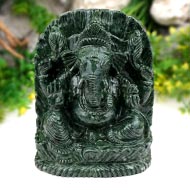
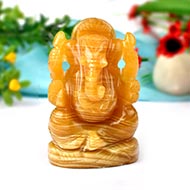

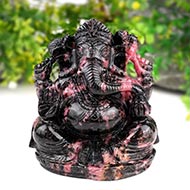
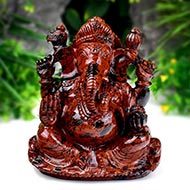


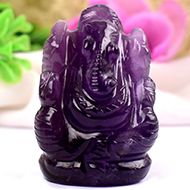
 Credibility Since 1997
Credibility Since 1997  Fastest Delivery
Fastest Delivery  Expert Advise & Counselling
Expert Advise & Counselling  Worldwide Distribution
Worldwide Distribution  Vedic Pooja Energization
Vedic Pooja Energization  Over 100,000 + Testimonials
Over 100,000 + Testimonials 
Leave your thought here